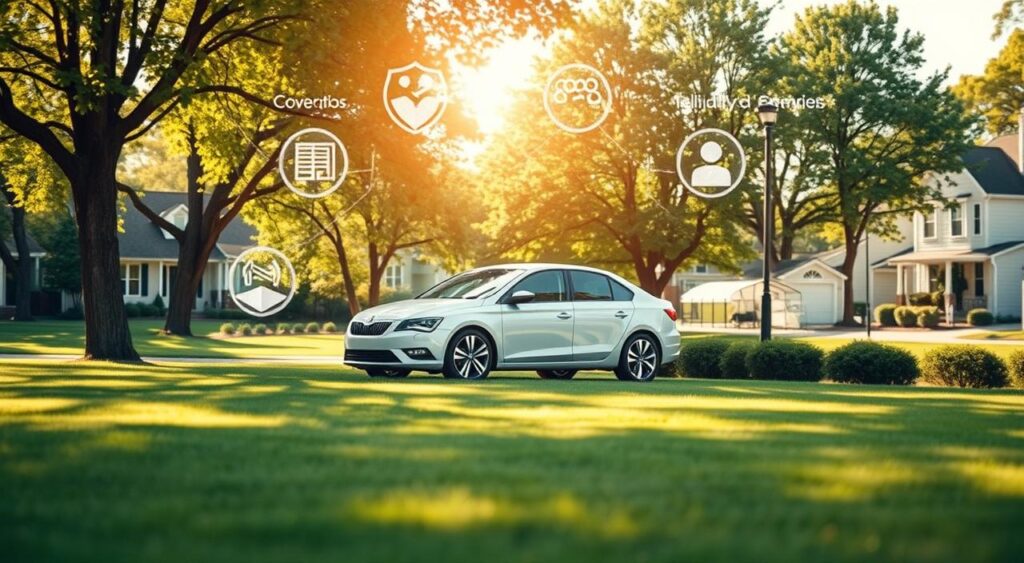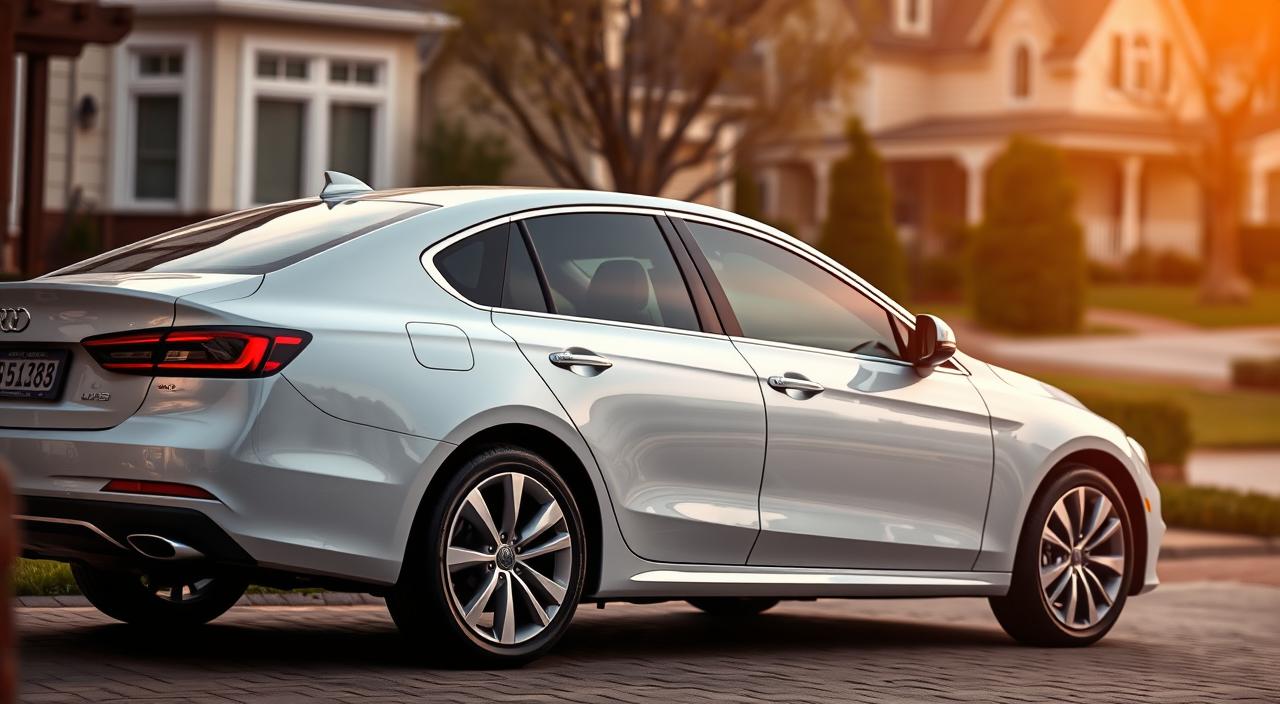What Is Full Coverage Car Insurance and Do You Need It?
Full coverage car insurance is a term commonly used to describe a comprehensive set of policy features that protect vehicle owners from various financial liabilities. Unlike minimum coverage, which meets basic legal requirements, full coverage typically includes additional elements such as collision and comprehensive coverage. Understanding what constitutes full coverage auto insurance is essential for making informed decisions about whether you need full coverage car insurance based on your vehicle type, financial situation, and personal preferences.
Key Takeaways
- Full coverage car insurance includes collision and comprehensive coverage.
- It provides extensive financial protection compared to minimum coverage.
- Understanding your needs is crucial in deciding if you need full coverage.
- Full coverage typically protects against a variety of potential losses.
- Evaluating your vehicle’s value and financial situation can guide your decision.
- Many car owners opt for full coverage for peace of mind.
Understanding Full Coverage Car Insurance
Full coverage car insurance offers a safeguard that goes beyond the basic requirements mandated by law. Understanding this type of policy can help you make informed decisions and choose the best protection for your vehicle.
Definition of Full Coverage
A Full Coverage Policy typically includes both collision and comprehensive coverage. Collision coverage is designed to protect your vehicle against damages resulting from accidents, regardless of who is at fault. On the other hand, comprehensive coverage is crucial for shielding your vehicle from non-collision incidents such as theft, vandalism, or natural disasters.
Types of Coverage Included
- Collision Coverage
- Comprehensive Coverage Car Insurance
- Liability Insurance (both bodily injury and property damage)
By opting for a Full Coverage Policy, you ensure that all bases are covered in the event of an accident or other unforeseen circumstances.
How It Differs from Minimum Coverage
The key distinction lies in the protections offered. Minimum coverage essentially meets state requirements, which often only cover liability for damages caused to other parties. In the debate of Full Coverage vs Liability Insurance, the former provides enhanced peace of mind. This level of coverage not only protects third-party interests but also secures your own vehicle from potential financial loss due to damages.
Benefits of Full Coverage Car Insurance
Choosing full coverage auto insurance presents several key advantages that significantly enhance your driving experience. Understanding the benefits of full coverage auto insurance opens up opportunities for greater financial security and peace of mind.
Financial Protection in Accidents
One primary reason to opt for full coverage is to ensure strong financial protection in case of accidents. Should you find yourself in a vehicular collision, the collision coverage component minimizes your out-of-pocket expenses, allowing you to focus on recovery without financial strain. This safety net proves invaluable in preserving your savings and maintaining your financial health.
Coverage for Natural Disasters
The protection offered by full coverage extends beyond everyday accidents. It includes coverage for natural disasters, ensuring your vehicle is safe from unpredictable and damaging events. Whether it’s a hurricane, flood, or other catastrophic conditions, full coverage safeguards your investment, allowing you to navigate these uncertainties with confidence.
Peace of Mind for Car Owners
Another notable benefit of full coverage auto insurance is the peace of mind it provides. Car owners can drive with confidence knowing they are protected against unexpected liabilities and damages. This assurance fosters a more relaxed driving experience, contributing positively to overall vehicle ownership.

Is Full Coverage Car Insurance Right for You?
Determining the necessity of full coverage car insurance involves evaluating various critical aspects. Understanding your individual situation is essential to making a well-informed decision. Several factors come into play when asking, “Do You Need Full Coverage Car Insurance?”
Factors to Consider
Many elements should guide your choice regarding full coverage car insurance. Assessing your situation can prevent you from choosing unnecessary insurance or leaving yourself underprotected.
Your Vehicle’s Value
The worth of your vehicle significantly influences the decision for full coverage. Newer and high-value cars often benefit from additional protection against accidents and theft. If your car is a substantial investment, opting for full coverage safeguards you against hefty financial losses.
Personal Financial Situation
Your financial stability plays a vital role in deciding on full coverage. If you can handle the costs associated with higher premiums and potential deductibles, full coverage may be advantageous for you. Consider whether this insurance option fits within your budget without stretching your finances too thin.

Cost of Full Coverage Car Insurance
Understanding the Full Coverage Insurance Cost is crucial for car owners considering this type of coverage. Premiums are generally higher for full coverage compared to basic liability policies, primarily due to the extensive protections offered. It’s essential to grasp the various elements that contribute to this cost, as a good grasp of these factors can lead to informed choices.
Average Premiums Explained
The average premiums for full coverage car insurance can fluctuate significantly. Many policyholders find that the cost often reflects the extensive nature of the coverage. Vehicles equipped with advanced safety features may enjoy lower rates, while high-performance models might raise the price of coverage.
Factors Influencing Cost
Several key factors influence the Full Coverage Insurance Cost, including:
- Your driving history and claims experience
- The type and make of your vehicle
- Your geographical location and local insurance regulations
- Your age and gender, which can affect risk assessments
- Annual mileage and how frequently you drive
Finding Affordable Options
To secure affordable full coverage options, consider implementing the following strategies:
- Shop around for multiple quotes from different insurers.
- Evaluate and possibly increase your deductibles to reduce monthly premiums.
- Look into potential discounts for bundling policies or maintaining a clean driving record.
Common Misconceptions About Full Coverage
Understanding full coverage car insurance requires clarity, particularly due to the widespread myths surrounding it. Many people harbor certain common misconceptions about full coverage that may lead to uninformed decisions regarding their insurance policies.
It Covers Everything
A prevalent myth is that full coverage encompasses all possible scenarios. In reality, common misconceptions about full coverage include the belief that it protects against every possible form of damage. While this policy provides extensive protection, specific exclusions exist. For example, damage resulting from illegal activities, such as racing, or intentional damage is often not covered.
It’s Always Necessary
Another false notion is that full coverage is essential for everyone. Not all drivers need this level of protection. Individuals with older vehicles may find that the cost of full coverage exceeds the car’s value, making it less of a necessity. Evaluating personal circumstances can lead to more tailored insurance choices, debunking the myth that full coverage is universally required.
Only New Cars Need It
Some assume that only new cars require full coverage, another of the common misconceptions about full coverage. In fact, older models can still greatly benefit from robust financial protection. Even if the car’s value diminishes over time, accidents can lead to significant repair costs. A wise approach is to assess both the vehicle’s worth and individual risk factors to determine the most suitable coverage.
When Is Full Coverage Not Needed?
Understanding when to get full coverage car insurance is crucial for maintaining both financial efficiency and adequate protection. In certain situations, full coverage may not be necessary, allowing car owners to save on insurance costs.
Older Vehicles
As vehicles age, their market value often declines. For older cars, the cost of full coverage can frequently exceed the potential benefits, making basic liability coverage a more practical choice. Many find it unnecessary to invest in full coverage when the vehicle is worth significantly less than the premium.
Low Mileage Usage
If you drive infrequently or maintain a low annual mileage, you might reconsider the need for full coverage. With fewer miles on the road, the chances of accidents decrease. Opting for minimal coverage in such cases can be a wise strategy. Evaluate your driving habits to determine if lower coverage suffices.
Unaffordable Premiums
In some instances, the premiums for full coverage can become unmanageable. If you find the costs are eating into your budget, it may be time to re-evaluate your insurance policy. A basic liability plan might offer sufficient protection while keeping expenses in check. Take the opportunity to explore alternative options, such as financial solutions that can alleviate the burden of high premiums.
Making the Best Choice for Your Insurance Needs
Choosing the right insurance is crucial for protecting your assets and ensuring financial stability in unexpected situations. Start by assessing your coverage options carefully. Full Coverage Auto Insurance may be the right fit for you, depending on your vehicle’s value and your personal situation. Evaluating policies from different providers can help you determine what types of coverage you truly need, such as liability, collision, or comprehensive coverage car insurance.
Open communication with your insurer is essential. When you talk to your insurer, ask detailed questions about their offerings and request clarifications on any complex policy terms. Understanding your options will allow you to spot potential gaps in coverage and take advantage of additional features that may enhance your policy without significantly boosting your premiums. Tailoring your insurance can lead to a more cost-effective solution that fits your lifestyle and financial needs.
Finally, make it a habit to review your policy details thoroughly. A comprehensive understanding of what’s included in your comprehensive coverage car insurance will empower you to make informed decisions. If you’re looking to explore further options tailored to your needs, check out this resource for detailed insights. This proactive approach can protect you against unforeseen circumstances while ensuring that you get the best value from your insurance investment.






